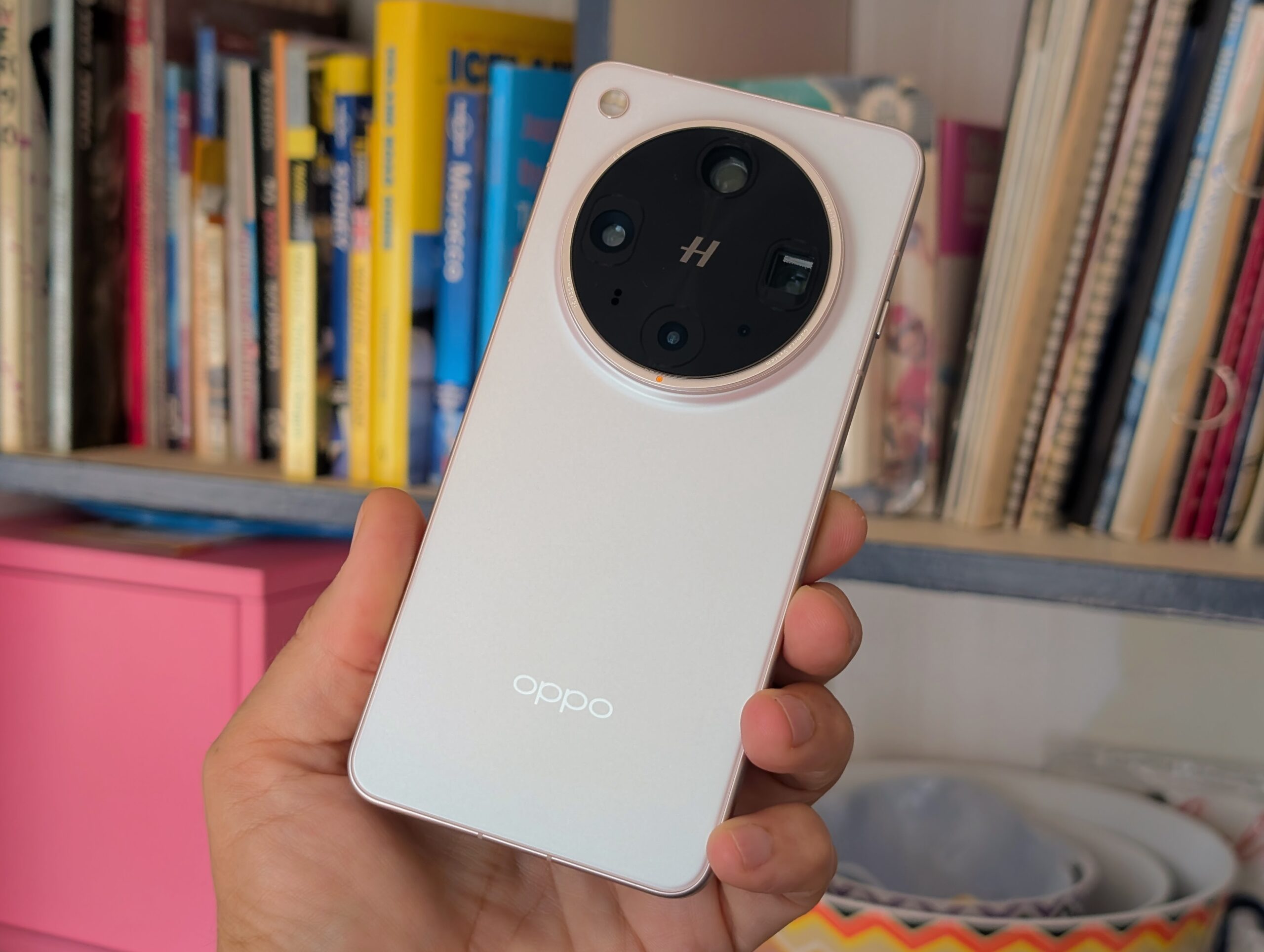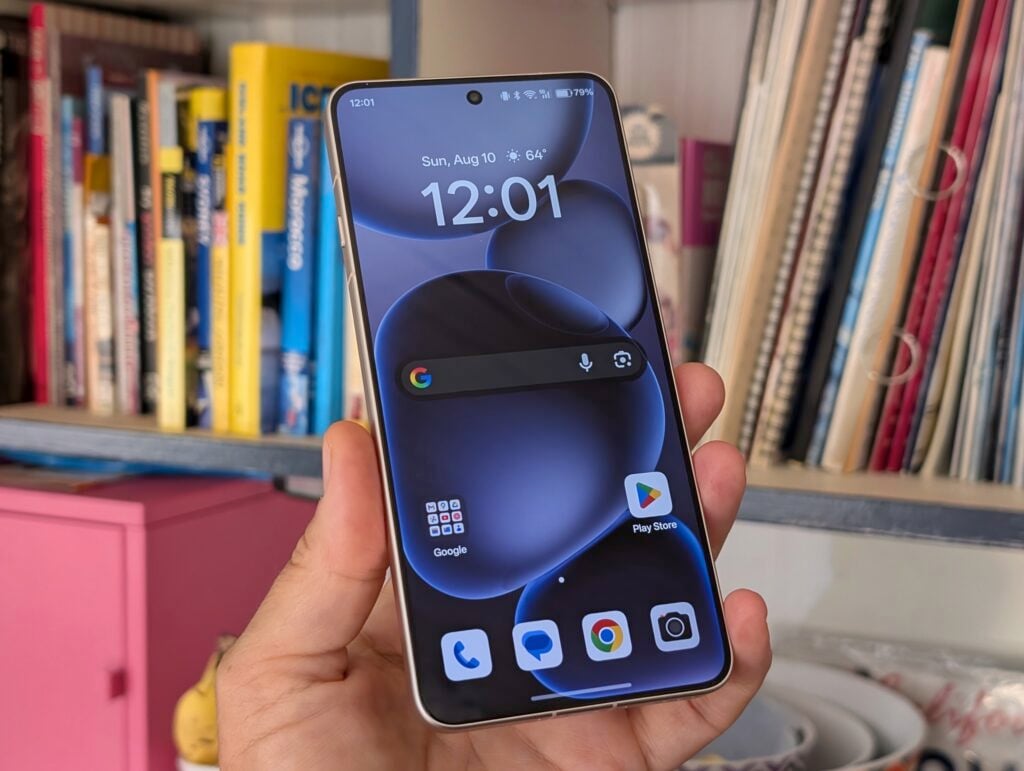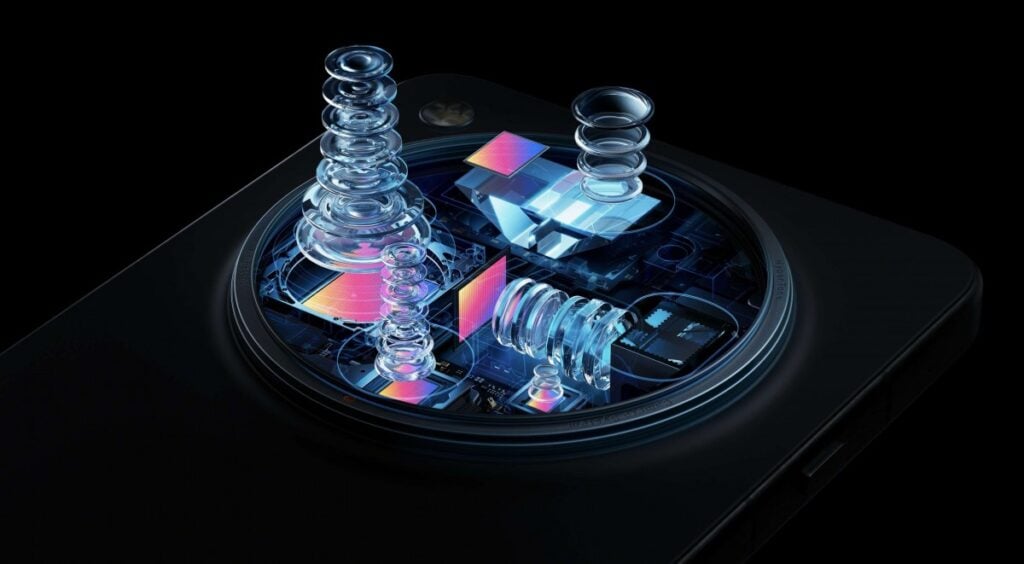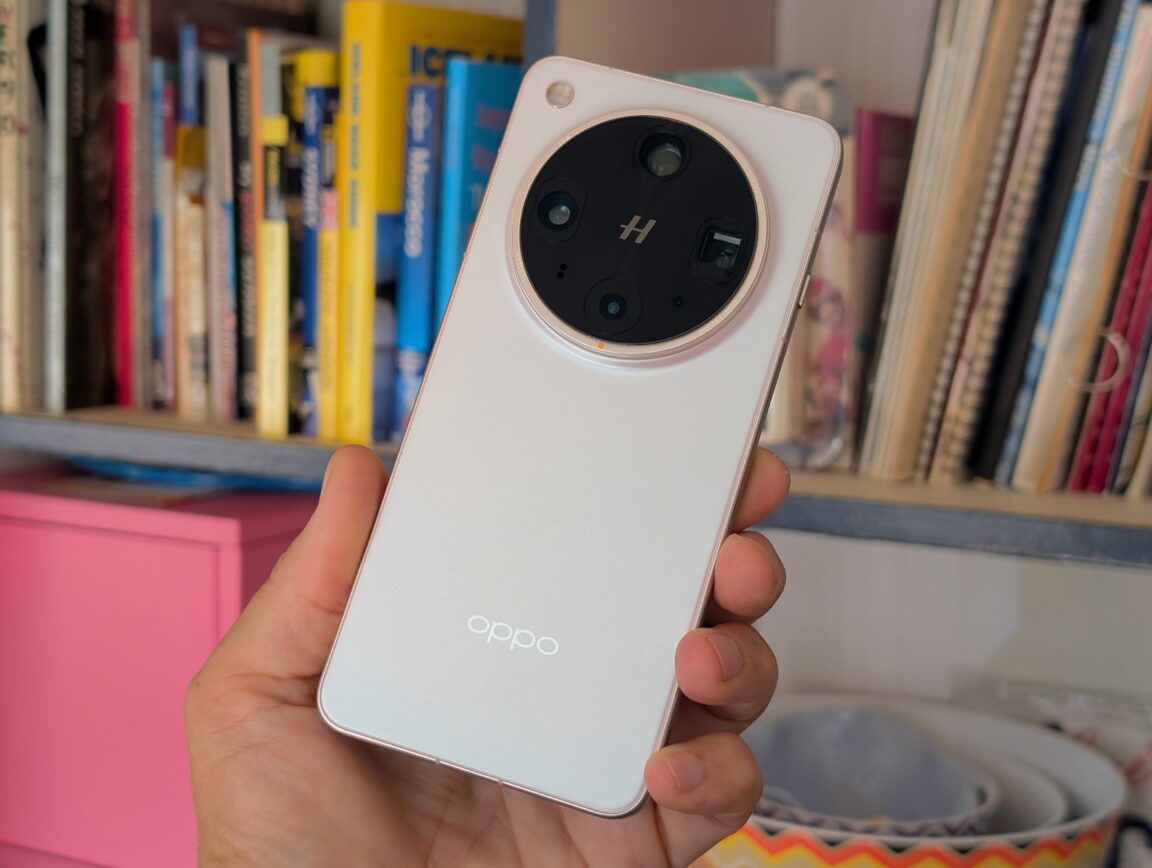
Earlier this year, I reviewed the Oppo Find X8 Pro, a fantastic Android flagship with superb Hasselblad shooters. Since then, Oppo launched the Find X8 Ultra, the successor to last year’s Find X7 Ultra, which I tested in Antarctica. The Find X8 Ultra takes everything about the Find X8 Pro and cranks it up to eleven. So, is the Find X8 Ultra the ultimate camera phone? And what is it like as a flagship? Let’s find out in my review.
Oppo Find X8 Ultra vs. X8 Pro: What’s different?
There are plenty of similarities between the Oppo Find X8 Ultra and the Find X8 Pro. So instead of reviewing the Find X8 Ultra from scratch I’ve decided to focus on what’s different. To start, I strongly suggest you read my Find X8 Pro review. Go ahead… I’ll wait. Are you back? Great! Basically, think of the Find X8 Ultra as a Find X8 Pro on steroids, with a higher-resolution display, different flagship SoC, and better shooters.
Design wise, instead of the rounded edges found on the Find X8 Pro and OnePlus 13, the Find X8 Ultra features flat, slab-like sides like the Find X8, iPhone 16 series, Galaxy S25 lineup, and Pixel 9 models. As a result, the Find X8 Ultra’s front and rear glass isn’t tapered (2.5D) like on the Find X8 Pro, but perfectly flat. This makes the Find X8 Ultra look and feel more substantial, but not as comfortable to hold as the Find X8 Pro.

Both phones have similar, large round camera pods, but the Find X8 Ultra’s is always black (regardless of colorway) and is slightly thicker than the Find X8 Pro’s. The layout is almost identical as well, with the four 50MP shooters arranged like cardinal points within the circular bump. Speaking of hues, the Find X8 Ultra is available in Matte Black, Pure White, Shell Pink, and is rated IP68 and IP69 like the Find X8 Pro.
It’s also worth noting that while the Find X8 Ultra is only marginally thicker than the Find X8 Pro (8.8 vs. 8.2mm), it is heavier (226 vs. 215g). The other dimensions are virtually the same, and the ports and controls are pretty much identical (including their placement), down to the Quick Button, a capacitive camera button with haptic feedback that’s similar to the iPhone’s Camera Control, but more intuitive and easier to use.
One control is different, though, and it’s a mixed bag. The alert slider found on the left edge of the Find X8 Pro – an iconic feature Oppo borrowed from sister brand OnePlus – is now gone, replaced on the Find X8 Ultra with a Shortcut button, which mimics the iPhone’s Action button, right down to its UI and functionality. While the Shortcut button is programmable, it simply doesn’t deliver the same tactile experience as the alert slider.
The Find X8 Ultra’s 120Hz LTPO AMOLED screen is larger than the Find X8 Pro’s (6.82 vs 6.78 inches), and higher resolution (Quad HD/1440p vs. 1.5k/1268p), but has a lower peak brightness (2,500 vs 4,500 nits). Oppo also changed the in-display fingerprint sensor, which is ultrasonic on the Find X8 Ultra, and optical on the Find X8 Pro. Both are equally responsive in my experience, and get the job done without any fuss.
While the Find X8 Pro is available worldwide (outside of North America), the Find X8 Ultra is only sold in China. Besides running different software (global vs. Chinese ROM), both handsets lack some 4G LTE and 5G bands used here, and won’t work on Verizon’s network. That said, I didn’t run into any issues using the Find X8 Ultra on T-Mobile, AT&T, and Telus in places like San Francisco, New York City, Denver, and Vancouver (Canada).
Under the hood, the Find X8 Ultra packs Qualcomm’s Snapdragon 8 Elite SoC instead of MediaTek’s Dimensity 9400 chip found in the Find X8 Pro. Both are state-of-the-art, flagship processors, and both perform like champs, no matter what you’re doing. The Find X8 Ultra comes with 12 or 16GB of RAM, and 256GB, 512GB, or 1TB of storage, and offers slightly faster storage than the Find X8 Pro (UFS 4.1 vs. 4.0).
In terms of battery life, both phones feature large capacity silicon-carbon cells and will easily last two days on a full charge. The Find X8 Ultra boasts a 6,100mAh battery with 100W SuperVOOC fast wired charging (and a compatible charger in the box), vs. 5910mAh and 80W for the Find X8 Pro. Both handsets also feature 50W AirVOOC fast wireless charging (Qi-compatible), and 10W reverse wireless charging.
On the audio front, the Find X8 Ultra’s stereo speakers sound just as loud and clear as the Find X8 Pro’s. The Find X8 Ultra runs ColorOS 15, which is based on Android 15, just like the Find X8 Pro. But since the Find X8 Ultra is exclusive to China, it comes with a Chinese ROM, which is slightly different from the global ROM on the Find X8 Pro. For example, there’s no Google Discover panel left of the home screen.
That’s really no surprise. Since the Find X8 Ultra is only sold in China, it doesn’t come with Google’s suite of apps pre-installed. As a result, you have to manually sideload the Google Play Store and install Google’s apps one-by-one. The other option is to restore Google’s apps from another Android device using Oppo’s Clone Phone app. While this isn’t a big deal, these extra steps require more work and additional knowledge.
Dismissing notifications with ColorOS 15 is different on the global and Chinese ROMs. With the Find X8 Pro you can dismiss a notification by swiping left or right in the notification tray, but with the Find X8 Ultra, you can swipe right to dismiss a notification, but you have to swipe left twice to dismiss a notification. If you only swipe left only once, you get a trash can and a settings icon. It’s a small thing, but it’s really annoying.
Oppo’s app store, the App Market, is partially in Chinese on the Find X8 Ultra, regardless of which region you chose in the settings. The phone also ships with a massive amount of bloatware, mostly Chinese apps that you’ll have to uninstall or disable. Regardless, ColorOS – alongside its twin, OnePlus’ OxygenOS – is polished and responsive, and remains my favorite Android skin from any Chinese phone manufacturer.
The ultimate cameraphone
The Oppo Find X8 Ultra packs four 50MP Hasselblad-branded cameras, just like the Find X8 Pro. But since this is an “Ultra” flagship and not a “Pro” device, some of these shooters use larger sensors and faster lenses. The Find X8 Ultra inherits the Find X7 Ultra’s 1-inch main sensor and the Find X8 Pro’s ultrawide. Meanwhile, the telephotos are similar to the Find X7 Ultra’s, but boast faster lenses.
Here’s a rundown on the Find X8 Ultra’s rear cameras:
- 50MP f/1.8 1.6-micron 23mm main sensor (1.0-inch Sony LYT-900) with laser AF, dual-pixel PDAF, and OIS
- 50MP f/2.0 0.64-micron 120-degree 15mm ultrawide lens (1/2.75-inch Samsung S5KJN5) with PDAF
- 50MP f/2.1 1.0-micron 70mm (3x) periscope telephoto (1/1.56-inch Sony LYT-700) with omni-directional PDAF and OIS
- 50MP f/3.1 0.8-micron 135mm (6x) tri-prism telephoto (1/1.95-inch Sony LYT-600) with dual-pixel PDAF and OIS.

Obviously, those are top-notch specs. Note that the Find X8 Ultra’s ultrawide sensor is smaller than the Find X7 Ultra’s but the 6x telephoto sensor is larger than its predecessor’s. The Find X8 Ultra’s telephoto lenses use a periscope layout (3x) and tri-prism setup (6x) which is the opposite of the Find X8 Pro’s. Like before, the f/1.8 main lens lacks the variable aperture found on some Xiaomi and Huawei flagships.
Look carefully, and you’ll find a tiny fifth lens in the back. This is a 2MP True Chroma shooter – basically an advanced spectral sensor that divides an image into 48 equal zones and adjusts the color temperature in each zone separately. In front, there’s a 32MP f/2.4 0.8-micron 21mm selfie camera with PDAF (1/2.74-inch Sony LYT-506) which, newer sensor aside, is pretty much identical to the Find X7 Ultra’s.

All four 50MP sensors use pixel binning, which improves low-light performance and reduces noise by combining groups of four (2×2) nearby pixels into one larger pixel. In addition, the main camera and 6x telephoto support in-sensor cropping, which results in quasi-“lossless” 2x and 12x zoom. Both imaging techniques deliver 12.5MP pictures at the highest possible quality when shooting in low light or when zooming

The Find X8 Ultra photo modes are similar to the Find X8 Pro’s and include macro (main and 3x telephoto), action, burst, portrait, night (all five cameras), 50MP high-res, panorama, long exposure, sticker, ID photo, and document scanner. Master mode is a pro/manual mode with additional controls that’s available on all four rear shooters. XPAN mode simulates Hasselblad’s signature 65:24 aspect ratio – perfect for those wide landscape shots.

Oppo also provides a trio of classic film emulation filters (Clear, Emerald, and Fresh). Clear Burst carries over from the Find X8 Pro. This feature reduces motion blur without compromising dynamic range or detail by merging one short and one long exposure in real time. By enabling Action Mode together with Clear Burst, the Find X8 Ultra is able to capture spectacular low-light action shots with any lens, and with virtually no shutter lag.
The Find X8 Ultra records video (stabilized, with stereo audio) at up to 4k 120fps with the four rear shooters, and 4k 60fps with the selfie camera. Video modes include HDR (Dolby Vision), portrait (main, selfie, 1080p 30fps), ultra steady (up to 4k 60fps rear, 1080p 30fps selfie), pro (manual, 4k 120fps), slow motion (4k 120fps, 1080p 240fps and 720p 480fps), time lapse (all cameras, 4k 30fps), and dual view (rear plus selfie, 1080p 30fps).
As you can see in our gallery, the Find X8 Ultra takes remarkable pictures, regardless of conditions. The resulting photos are simply gorgeous, with excellent detail, accurate exposure, and superb colors. Low-light performance is impressive, and dynamic range is outstanding – especially with that massive 1-inch main sensor. Selfies are lovely too, and video performance is solid, but the iPhone still captures slightly better video.
Zooming is what really sets the Find X8 Ultra apart from most of the flagship competition. By combining AI zoom algorithms with top-notch telephoto shooters, 12x images are solid, 20x results are great, 30x photos are good, and even 60x photos look decent. Of course, image quality starts degrading beyond that, but I’ve taken some 120x photos that are perfectly usable. And that’s just incredible.
Oppo Find X8 Ultra review: Verdict
I’ve been using Oppo’s Find X8 Ultra on and off for almost four months now, and despite having access to almost every flagship currently on the market, I can’t seem to put it down for more than a few days at a time. Not only is the Find X8 Ultra a phenomenal camera phone, but it’s also a no-compromise flagship that offers some of the best hardware and software available in any smartphone today. That’s no small feat.
And while the Xiaomi 15 Ultra and Vivo X200 Ultra compete directly with the Find X8 Ultra, their shooters aren’t nearly as well balanced. Plus, unlike the competition (and last year’s Find X7 Ultra), the Find X8 Ultra doesn’t immediately scream “I’m a camera phone”. It looks and feels just like a regular flagship. Make no mistake, though: the Find X8 Ultra is the ultimate camera phone. Too bad it’s only available in China.

